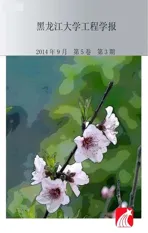Overview of research methods of frozen soil hydrology in Heilongjiang Province
2014-07-06QIPengDAIChangLeiGAOYuWUGenZhi
QI Peng,DAI Chang-Lei,GAO Yu,WU Gen-Zhi
(1.Institute of Groundwater in Cold Region,Heilongjiang University,Harbin 150080,China;2.School of Hydraulic& Electricpower,Heilongjiang University,Harbin 150080,China)
0 Introduction
Permafrost hydrology and its research method in cold region,belonging to the category of frigid zone hydrology,is a comprehensive fringe science,involving geophysics,hydrology and meteorology and geology and other disciplines,in relation to the hydrological and hydraulic calculation,ice engineering,hydrology,water resources assessment,agricultural hydrology and meteorology,ecological environment and the development of industrial and agricultural production.The improvement of the permafrost hydrology research and technology,reflects a country and the area of science and technology progress.However,due to the complexity of the permafrost hydrology,countries have no specialized research institutions,which leads to the science theory and method is relatively weak.During his work,Mr.Xiao Difang did a lot of research on permafrost hydrology,this paper made a simple analysis for Mr.Xiao himself on the permafrost hydrology research ideas in order to provide reference for development of permafrost hydrology.
1 Main works on permafrost hydrology
1.1 Xiao Difang's study experience
Mr.Xiao has done a lot of works in the field of permafrost hydrology,some details are given in Table 1.
1.2 The main result of permafrost hydrology
Mr.Xiao got some achievements in his work,the main results are as shown in Table 2.
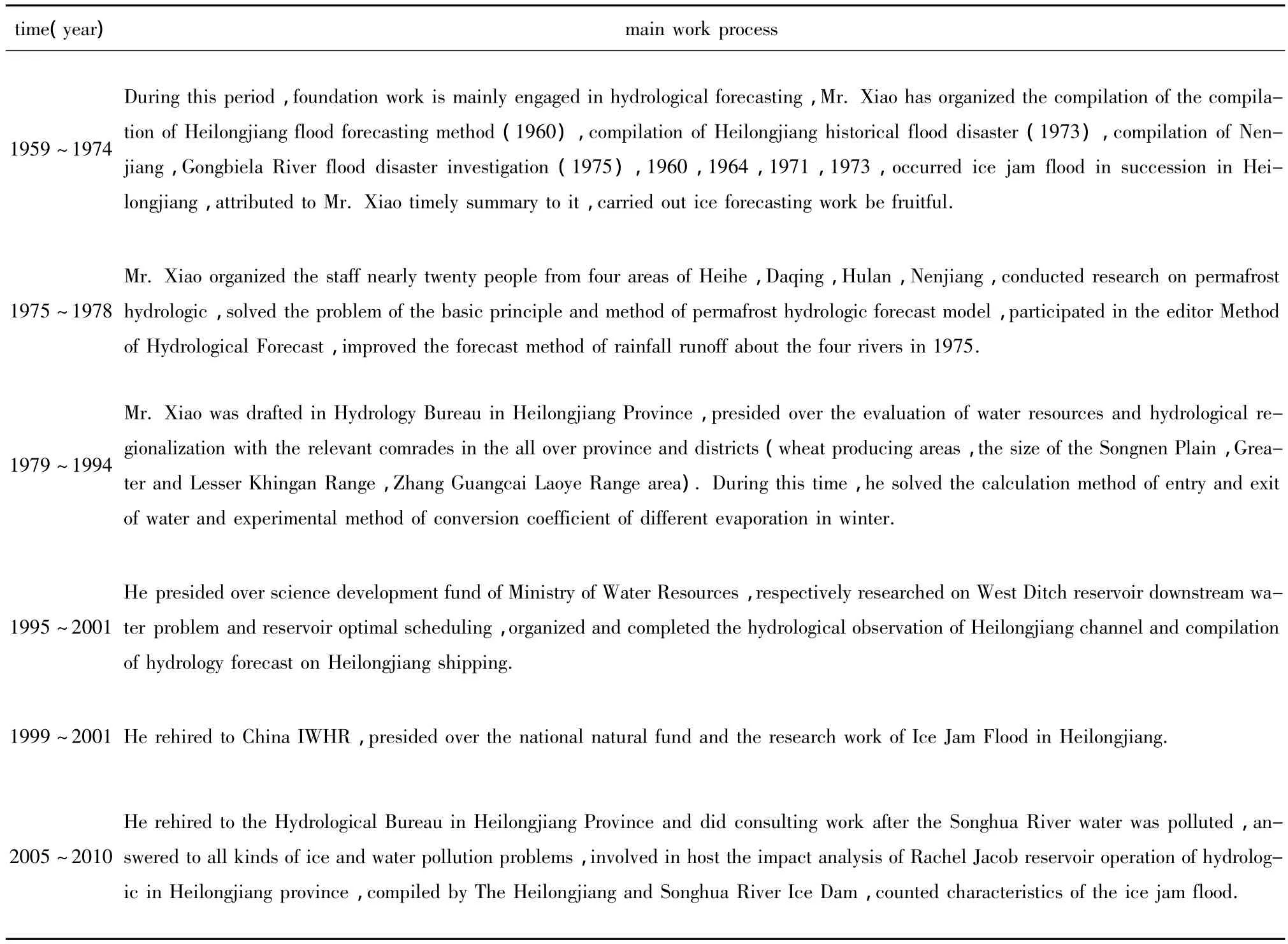
Table 1 The main work process

Table 2 The main results
2 Analysis of the main research methods
Due to the cold weather in winter,the ground covered by snow,frozen soil,regular of the water movement and the transformation of the relationship of precipitation,surface water and groundwater are constrained by the permafrost in cold region,there are many different dynamic regulars and seasonal characteristics with no freezing area[1].Relationship of the snowmelt runoff and rainfall runoff during the permafrost thawing,the calculation and prediction of annual and seasonal rainfall runoff,the evaluation of groundwater resources,the index of drought and waterlogging,the determination of agricultural water consumption quota,which are all different from the conventional method with non-frozen regions.The basic theory of hydrology and Hydraulic conservancy calculation under the influence of permafrost as a simple example of correlation analysis,the specific contents are displayed as follows in Table 3.

Table 3 The basic theory of hydrology and Hydraulic conservancy calculation under the influence of permafrost
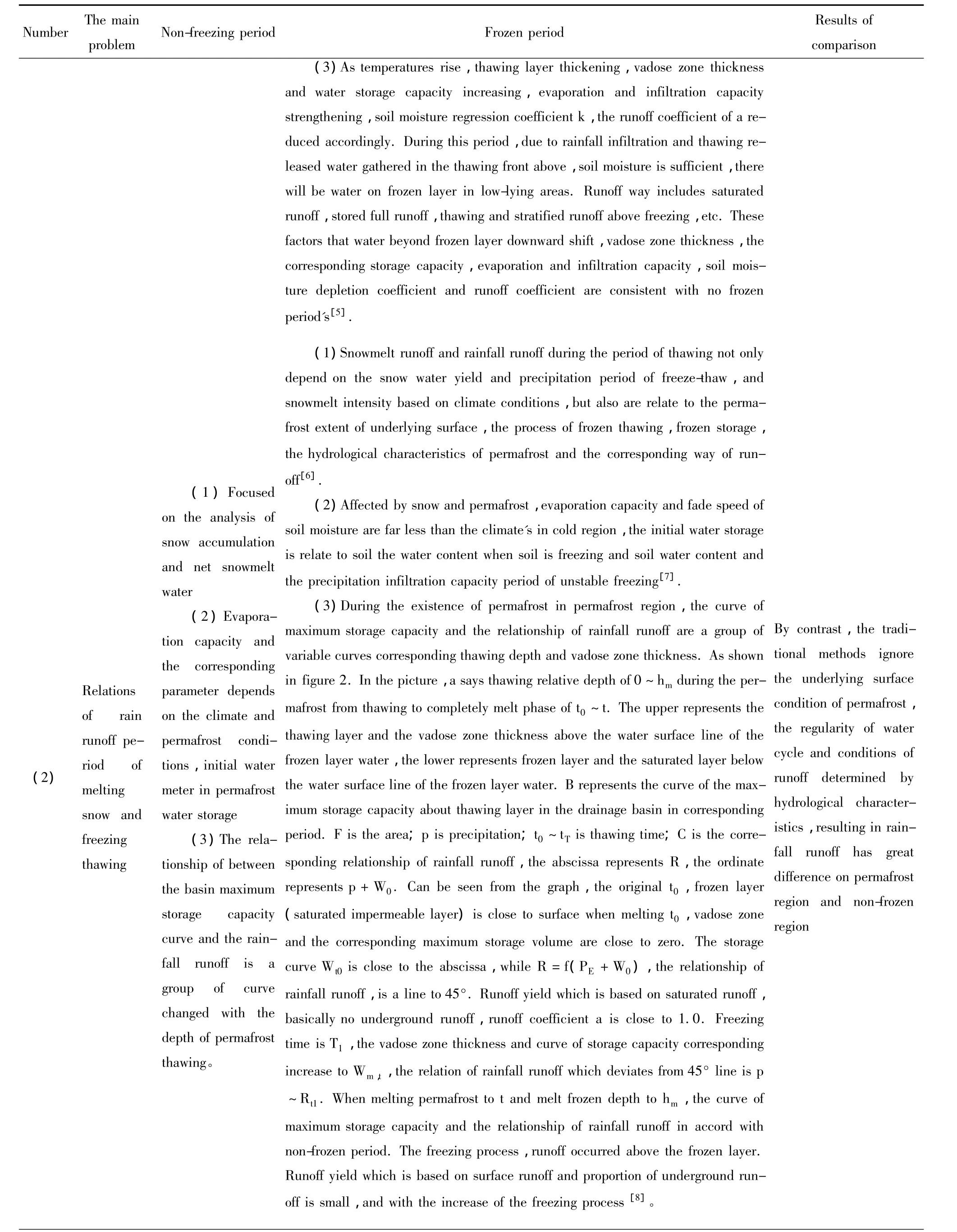
Continued table 3

Continued table 3
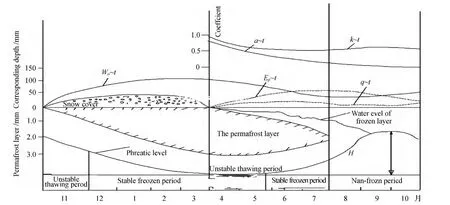
Fig.1 Change process of hydrological characteristics parameters of permafrost
3 Conclusions
The method of permafrost hydrology belongs to the category of frigid hydrology.The research is very weak about the function and performance of permafrost,the effect of permafrost hydrology,and the law of water dynamics the current domestic and abroad.The relevant calculation theory and method of hydrology and water conservancy are conventional one.and calculation,is the conventional method.It ignores the effect and char-acteristic of permafrost hydrology.Therefore,it is difficult to obtain satisfying results.
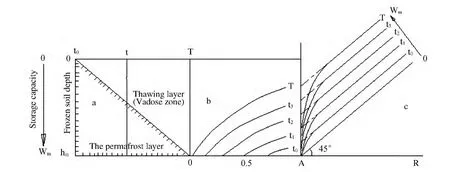
Fig.2 The storage curve about basin in the period of thawing and the chart of seasonal variation of rainfall runoff
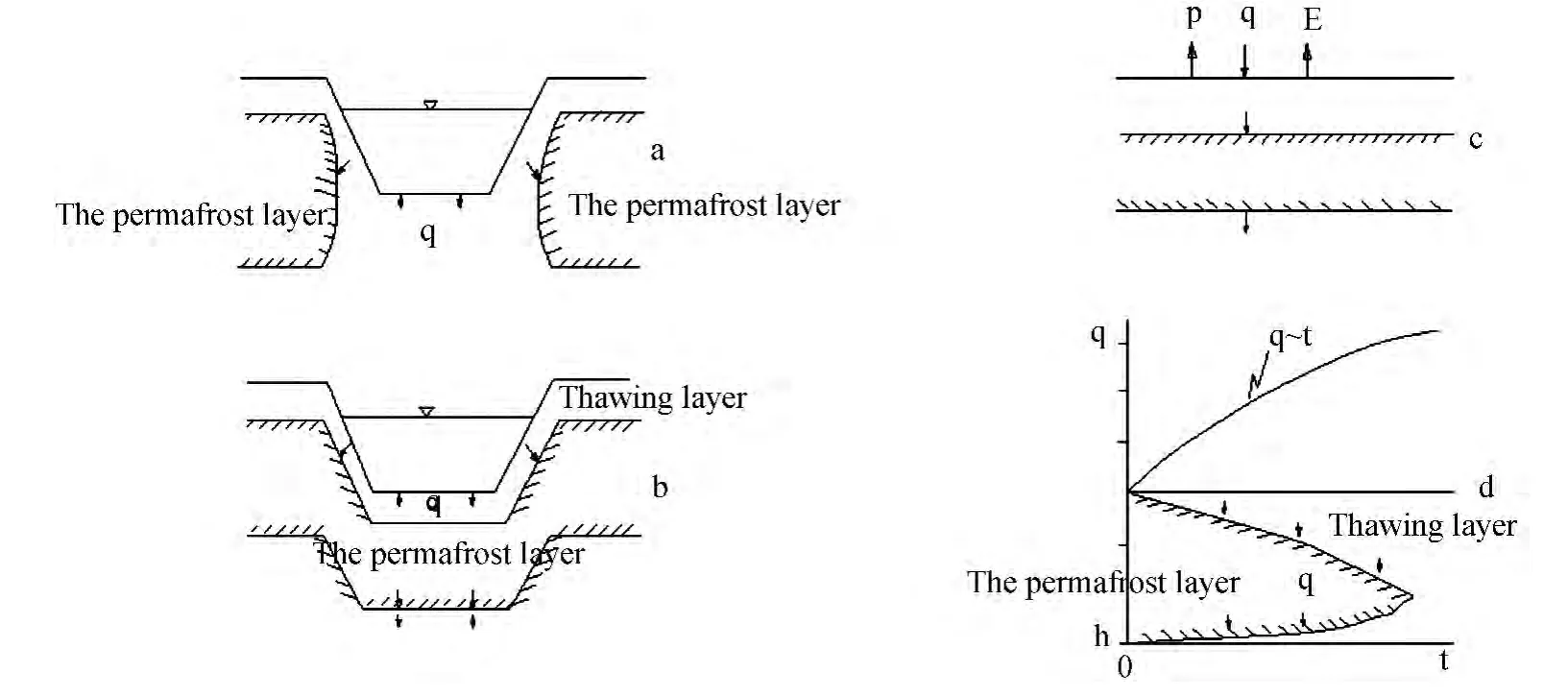
Fig.3 Schematic diagram of seepage recharge in the field and canals
Based on many years of work experience,the permafrost hydrology is summarized as below by Mr.Xiao.
Regarding the process of permafrost as the regulating system of water.According to the effect of permafrost hydrology,determining the corresponding hydrological parameters,considering the increasing process of water in permafrost,calculating storage capacity of soil(basin)across the years.
According to the complex relationship between the curve of storage capacity in basin and rainfall runoff,runoff way determined by permafrost divides thaw period into the thawing layer and freezing layer,the evaporation model of storage volume calculation in basin stratifies setting.The corresponding parameters uses variable number with the variation of seasonal thawing depth,analysis of the relationship between annual and seasonal rainfall runoff increases by starting storage capacity of across the years calculation
The massif is divided into six parts in calculation of groundwater recharge.Considering the hydrological effects of permafrost when each part of boundary conditions is divided.The plain's recharge of groundwater is mainly in non-frozen period,which adopts the mathematical model deduced by the method of flux for moisture movement to compute.
Calculation of waterlogging and drought index is based on the regulation for water storage of permafrost and the evaporation inhibited by permafrost,and considering the underlying surface condition of permafrost,the index that reflects the balanceable relationship between supply and need of crop ecological water is built.The relationship of distribution between rainfall evaporation andsurface&undergroundrunoffis changed by function and performance of permafrost,the precipitation infiltration coefficient k,the feedwater coefficient a,the canals recharge coefficient u all are less than in the non-frozen period.The recharge sources of groundwater mainly stems from the mainflood season after the permafrost completely thawing.Total of annual recharge is less than the non-frozen region's under the same conditions.The calculation methods of groundwater segmentation is different from the conventional method on the non-frozen conditions.The deviation would be very large between the results achieved by the conventional method and actual results if ignores the impact of hydrological experiment under the influence of the permafrost,hydrological forecasting,hydrological and hydraulic calculation,evaluation of water resource,etc.
Therefore it has important practical and scientific significance to strengthen the study of permafrost hydrology and establish the theory and method of the permafrost hydrology for improving the natural science and solving the problems in production.
[1]Yang G Y,Yin F Z,Liu X F,et al.Study on characteristic of frozen soil hydrology and runoff mechanism in cold region[J].Water Resources and Hydropower Engineering,2007,(1):39-42.
[2]Lin W B,Cai Z C,Xiao X T,et al.Discussion of relevant issue about model of stored-full runoff is applied in cold frozen soil regions[J].Journal of Heilongjiang Hydraulic Engineering College,2007,34(1):12-15.
[3]Xiao D F,Chen P Z.The relationship of between rainfall and runoff under the influence of frozen soil[J].Hydrology,1983,(6):10-16.
[4]Xiao D F,Wen S S,Zhu D Z.Study on prediction model of month-rainfall runoff in cold regions[J].Water Resource& Hydropower of Northeast China,1995,(10):18-22.
[5]Xiao D F,Zhang P Y,Liao H C.Analysis of dynamic law of groundwater in cold regions[J].Journal of Heilongjiang Hydraulic Engineering College,2008,35(3):120-122,128.
[6]Li L H,Xiao D F,Yang C S.The exploration of model for the snowmelt runoff and rainfall runoff in the period of frozen soil thawing in cold regions[J].Hydrology,2011,(2):84-88,74.
[7]Xiao D F,Ding X L.The question of river base flow separation method in cold region[J].Hydrology,1996,(2):27-32.
[8]Liao H C,Zhang B,Xiao D F.Hydrological characteristics of frozen soil in cold regions and effects of frozen soil on groundwater recharge[J].Journal of Heilongjiang Hydraulic Engineering College,2008,35(3):123-126.
[9]Hao Z J,Xiao D F,Zhu W S.Estimated method of river freezing water capacity in winter in cold regions[J].Journal of Heilongjiang Hydraulic Engineering College,2004,31(4):42-43.
[10]Yang G Y,Wang C H,Ding X L,et al.Meteorological and hydrological characteristics of agriculture in cold regions and the confirmation method of the relevant index of drought and waterlogging[J].Heilongjiang Science and Technology of Water Conservancy,2006,(6):1-4.
杂志排行
黑龙江大学工程学报的其它文章
- Industrial and residential construction on hydraulic fill in permafrost regions:problems and prospects
- A permafrost factor in the development of deformations on the Amur Highway
- The forecast of a temperature regime of soils containing the pile foundation of a pithead on diamond-mining mines of cryolithic zone
- Temperature study of railway embankments on ice-rich permafrost in Yakutia
- Environmental geochemistry of urban areas in Yakutia
- The problem of project statement of construction principles of buildings and facilities in permafrost
